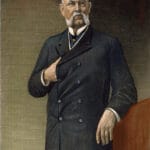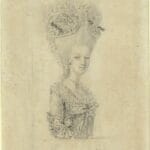Delving into Cooper’s World of Conspiracy
Unveil the enigmatic world of William Cooper and his thought-provoking book, “Behold a Pale Horse.” This captivating fusion of fact and fiction, published in 1991, has stirred controversy, weaving together personal stories with alleged secrets to explore hidden societies and the potential for power manipulation. Cooper, a former Navy intelligence officer, claimed to have stumbled upon classified documents that exposed a sinister global plot. He took to the airwaves with his radio show, “The Hour of the Time,” captivating listeners with tales of conspiracies that reached the highest levels of power.
“Behold a Pale Horse” reads like a thriller, filled with shocking claims about:
- The assassination of President John F. Kennedy
- A manufactured AIDS epidemic
- The government’s alleged cover-up of extraterrestrial life
Cooper’s ideas, though often questioned, still resonate with those seeking alternative answers to the complexities of our world. Let’s dive into Cooper’s world and delve into the enduring impact of “Behold a Pale Horse” on the realm of modern conspiracy theories.
The Conspiracy Theories Within “Behold a Pale Horse”
Imagine a world shrouded in secrets, where powerful forces manipulate events from the shadows, and the truth remains hidden from the public. This is the world William Cooper constructed in “Behold a Pale Horse.” Let’s examine some of the most prominent conspiracy theories he put forth:
The New World Order: Cooper believed that a powerful and secretive group, often referred to as the Illuminati, was orchestrating global events to establish a totalitarian “New World Order.” This group, he suggested, consisted of elites from various backgrounds who held significant influence over governments and financial institutions.
The JFK Assassination: Cooper argued that President John F. Kennedy was assassinated because he posed a threat to the hidden agenda of this powerful elite. Cooper suggested that Kennedy discovered a truth—possibly related to extraterrestrial life or a sinister plot—that led to his assassination.
The AIDS Epidemic: One of Cooper’s most controversial claims is that the AIDS virus was deliberately engineered in a laboratory. He suggested that this was part of a larger population control scheme orchestrated by the global elite.
Government Cover-Up of UFOs: Cooper was a staunch believer in the existence of extraterrestrial life. He claimed that the government had been covering up evidence of UFO sightings and alien contact for decades, fearing widespread panic and a loss of control.
The Enduring Influence of “Behold a Pale Horse”
While experts have debunked many of the claims in “Behold a Pale Horse,” highlighting the dangers of misinformation, Cooper often relied on questionable sources and made leaps in logic that didn’t hold up under scrutiny. Yet, the book’s influence persists. Groups like QAnon and various anti-government militias have drawn inspiration from Cooper’s ideas, demonstrating the book’s enduring and potentially dangerous legacy.
Why Conspiracy Theories Like Cooper’s Endure
Why are conspiracy theories, like those presented in “Behold a Pale Horse,” so alluring? One explanation is that they offer a sense of control in a world that often feels chaotic and unpredictable. They provide simple answers to complex questions and tap into our distrust of authority.
In our current age of instant information and social media, conspiracy theories spread like wildfire. The internet has become a breeding ground for these narratives, making it even more challenging to discern fact from fiction.
Combating Misinformation and Promoting Critical Thinking
Combating the spread of misinformation requires a collective effort. Media outlets have a responsibility to fact-check and debunk conspiracy claims, while individuals need to approach information with a critical eye. By promoting media literacy and encouraging healthy skepticism, we can navigate the complex world of information and form opinions based on evidence rather than unfounded speculation.
The Legacy of William Cooper
Though controversial and widely disputed, “Behold a Pale Horse” remains a significant cultural artifact. It serves as a reminder of the power of belief and the importance of critical thinking in the digital age. William Cooper, the man behind the book, remains an enigma. Did he genuinely believe the claims he made, or was he a master storyteller who tapped into a growing vein of societal distrust? Regardless of his motivations, Cooper’s work continues to spark debate and fuel the imaginations of those who suspect that there’s more to the world than meets the eye.
Internal Links:
Remember to include your internal links naturally within the content. For example, you could mention a historical figure like Black Sam Bellamy when discussing pirates or maritime history, or perhaps Bonnie and Clyde when talking about famous outlaw couples, if it fits contextually.
- Unlocking Francis Alexander Shields’ Finance Empire: A Comprehensive Biography - July 12, 2025
- Unveiling Francis Alexander Shields: A Business Legacy - July 12, 2025
- Francis Alexander Shields’ Business Career: A Comprehensive Overview - July 12, 2025















